Podcast: Play in new window | Download
Subscribe: Apple Podcasts | RSS
 Get the official Votan “We Were First!” t-shirt here: https://teespring.com/get-votan?tsmac=store&tsmic=mexico-unexplained&pid=2&cid=573
Get the official Votan “We Were First!” t-shirt here: https://teespring.com/get-votan?tsmac=store&tsmic=mexico-unexplained&pid=2&cid=573
Ancient contact between the Old World and the New World – Eurasia and Africa with the Americas – has always been a difficult road to go down. As soon as Europeans made contact with the peoples in the Western Hemisphere, questions arose not only about the nature of the people the Europeans encountered, as in, whether or not they had a soul or were really completely human, questions arose as to the origins of these people. As ruins were uncovered of civilizations more ancient than the ones initially contacted, the questions about Native American origins intensified. People began looking for similarities between the Old World and the New, theories arose, and confirmation bias set in. According to Wikipedia, confirmation bias is defined as “the tendency to search for, interpret, favor, and recall information in a way that confirms one’s preexisting beliefs or hypotheses, while giving disproportionately less consideration to alternative possibilities. It is a type of cognitive bias and a systematic error of inductive reasoning. People display this bias when they gather or remember information selectively, or when they interpret it in a biased way The effect is stronger for emotionally charged issues and for deeply entrenched beliefs. People also tend to interpret ambiguous evidence as supporting their existing position.” Cognitive bias plays an important role in the topic of today’s episode, the mysterious and oft-maligned character from ancient Mexican myths and legends called Votan. He has been plugged in to many different researchers’ theories and speculations about what happened in the New World during times before the European conquest. On this episode of “Mexico Unexplained” we will ask the question, “Who was Votan?” and will explore some of the major theories out there and how they relate to original sources.
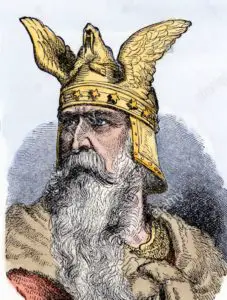 Within the first decade of the Spanish conquest of the New World, members of the clergy and royal officials began the task of writing down everything they could about the newly conquered populations. This served several purposes. The main reason why there was such a push to document everything Native – especially ruling structures and religion – was so that the Spanish could better understand how to subjugate completely their newly conquered populations. Many of the early Spanish chroniclers had a very poor understanding of local languages and customs, and some interpretations of local histories and local belief systems are “off” as a result. The Spanish, who encountered living civilizations, some of which had formal written languages and complex social structures, are often the best sources from which to base further research. However, since the Conquest these often fragmented and incomplete writings have been augmented by modern scientific research, with specific emphasis on the science of archaeology to help piece together an accurate picture of life in the Americas before the Europeans. We will look at firsthand chronicles of the Votan story, examine any archaeological or scientific evidence for Votan and look at some modern interpretations.
Within the first decade of the Spanish conquest of the New World, members of the clergy and royal officials began the task of writing down everything they could about the newly conquered populations. This served several purposes. The main reason why there was such a push to document everything Native – especially ruling structures and religion – was so that the Spanish could better understand how to subjugate completely their newly conquered populations. Many of the early Spanish chroniclers had a very poor understanding of local languages and customs, and some interpretations of local histories and local belief systems are “off” as a result. The Spanish, who encountered living civilizations, some of which had formal written languages and complex social structures, are often the best sources from which to base further research. However, since the Conquest these often fragmented and incomplete writings have been augmented by modern scientific research, with specific emphasis on the science of archaeology to help piece together an accurate picture of life in the Americas before the Europeans. We will look at firsthand chronicles of the Votan story, examine any archaeological or scientific evidence for Votan and look at some modern interpretations.
The first documented account of the Votan legend comes from the Bishop of Chiapas, a man named Francisco Nuñez de la Vega. Bishop Nuñez’ 1702 work titled Constituciones diocesanas del obispado de Chiappa, Votan was based on information taken from original indigenous written texts and calendars from the area of the modern Mexican state of Chiapas. We find that the person of Votan lived in a great stone structure, which he had been ordered to build by his uncle. The building was near the banks of the Usumacinta River in the kingdom of 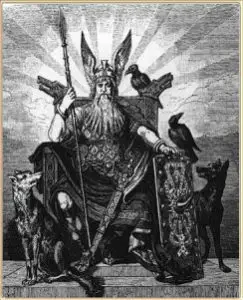 Na Chan, which was founded by Votan. The kingdom’s territory eventually extended across the mountains and jungles of Chiapas and to the Pacific Ocean. The gods commanded Votan to divide up the lands among the people. Votan is also noted in the 1702 Nuñez work as to have been the one to give the ancient civilizations of Mexico written language. Further, Nuñez states that Votan, as the founder of the royal house of Cham or Snake, had many descendants in Chiapas and some still living at the time of his writing. Votan here also sounds more like a real historical person instead of a supernatural being. The bishop also made mention that the current Chiapans were now all faithful Christians and after having studied the Gospels for many years had claimed to be the sons of Noah of the biblical flood story. The Nuñez chronicle does not mention any physical characteristics of Votan or where he supposedly came from. Those and other pieces of information would be fleshed out by future researchers and those putting forth alternative hypotheses.
Na Chan, which was founded by Votan. The kingdom’s territory eventually extended across the mountains and jungles of Chiapas and to the Pacific Ocean. The gods commanded Votan to divide up the lands among the people. Votan is also noted in the 1702 Nuñez work as to have been the one to give the ancient civilizations of Mexico written language. Further, Nuñez states that Votan, as the founder of the royal house of Cham or Snake, had many descendants in Chiapas and some still living at the time of his writing. Votan here also sounds more like a real historical person instead of a supernatural being. The bishop also made mention that the current Chiapans were now all faithful Christians and after having studied the Gospels for many years had claimed to be the sons of Noah of the biblical flood story. The Nuñez chronicle does not mention any physical characteristics of Votan or where he supposedly came from. Those and other pieces of information would be fleshed out by future researchers and those putting forth alternative hypotheses.
Votan next makes his appearance in the Spanish written record in a 1786 publication by a man named Antonio del Río. He took Bishop Nuñez’ writings and added to them, throwing in his own speculations and theories. Del Río wrote about Votan’s travels in the Old World and his possible connection to the ancient Middle East. He speculated that Votan had come to Mexico after the destruction of the Tower of Babel and had also connected Votan to Noah, much as the native Chiapans themselves did 80 years before. Del Río’s speculations may have come from hazy reports from local Indians who had by then been many generations removed from the Conquest and out of touch with their own pre-Hispanic legends and histories, or they may have been part of a fanciful embellishment on the part of del Río. During del Río’s time, a few decades before Mexican independence, the ancient cultures of Mexico still had been poorly understood and there were many theories of the origins of the Native cultures at that time. During del Río’s era similar information about 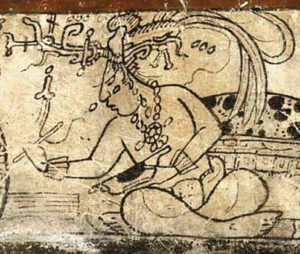 Votan was coming from a Spanish priest named Ramón de Ordoñez y Aguilar, who was assigned to the Maya villages around the ruins of Palenque in Chiapas near the border with Guatemala. He wrote a book titled Probanza de Votan based on accounts of the locals, with some information supposedly coming from actual descendants of Votan. In the book it details Votan’s 4 voyages back and forth between the Old World and the New World.
Votan was coming from a Spanish priest named Ramón de Ordoñez y Aguilar, who was assigned to the Maya villages around the ruins of Palenque in Chiapas near the border with Guatemala. He wrote a book titled Probanza de Votan based on accounts of the locals, with some information supposedly coming from actual descendants of Votan. In the book it details Votan’s 4 voyages back and forth between the Old World and the New World.
In modern archaeology, Votan has been associated with the Maya “God D” also known as Itzamná – “Reptile House” – among certain Maya groups. He looks like an old man with sunken cheeks and flowing robes as a scribe would wear. He is tall sometimes he is associated with wings on his head along with a flat obsidian disk in the middle of his forehead. The ancient Maya prayed to him as a granter of k’uhul, a sacred life force energy used for healing. Votan is seen as a god of kings and a patron of noble houses and is associated with the third day of the week on the Maya calendar. In the Maya creation story he also placed the 3rd stone on the Cosmic Hearth from whence all warmth generates. In newly translated Classical Maya writings this hearth stone is also called the Waterlily Throne Stone.
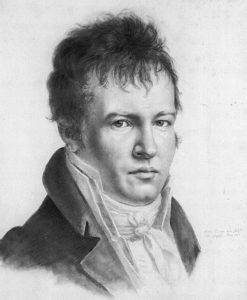 It was the Berlin-born Alexander von Humboldt who first made the connection between Votan and the northern European myths and legends in the early 19th Century. Von Humboldt was first struck by the similarities between the name Votan and Woden, the Anglo-Saxon/Germanic version of the Viking god Odin. Name coincidences happen throughout the world and across many languages, but looking at the Odin/Woden connection to Votan, we see some similarities that may go beyond coincidence. Votan is credited with giving writing to the Mesoamericans. Odin gave runic writing to the Norse. Odin is pictured with wings on his head and wearing robes. Woden or Odin as one of the main gods of the ancient European legends was also known as a patron and helper of the ruling elite, much like the Mexican Votan. The proto-Germanic word, from which Woden originates is wodaz which means “prophet.” One of Odin’s other names in the Norse sagas is Valtam, which means “The Warrior.” Perhaps the most curious coincidence, which even links the Votan/Woden story to the modern age is that the Mayan Votan was associated with the third day on the Maya calendar. Our third day of the week, Wednesday, in Old English, Wodensday, was named for the old European god Woden. Is our modern “hump day” named for the same person as this mysterious Maya god, or is it all just a coincidence?
It was the Berlin-born Alexander von Humboldt who first made the connection between Votan and the northern European myths and legends in the early 19th Century. Von Humboldt was first struck by the similarities between the name Votan and Woden, the Anglo-Saxon/Germanic version of the Viking god Odin. Name coincidences happen throughout the world and across many languages, but looking at the Odin/Woden connection to Votan, we see some similarities that may go beyond coincidence. Votan is credited with giving writing to the Mesoamericans. Odin gave runic writing to the Norse. Odin is pictured with wings on his head and wearing robes. Woden or Odin as one of the main gods of the ancient European legends was also known as a patron and helper of the ruling elite, much like the Mexican Votan. The proto-Germanic word, from which Woden originates is wodaz which means “prophet.” One of Odin’s other names in the Norse sagas is Valtam, which means “The Warrior.” Perhaps the most curious coincidence, which even links the Votan/Woden story to the modern age is that the Mayan Votan was associated with the third day on the Maya calendar. Our third day of the week, Wednesday, in Old English, Wodensday, was named for the old European god Woden. Is our modern “hump day” named for the same person as this mysterious Maya god, or is it all just a coincidence?
When serious scholarly researchers attached to universities began exploring the connections between the Old World and the New, the various theories and apparent connections between the two areas of the world were slowly discounted, overturned, ignored by the establishment or dismissed as racism. The racist shut-down of much of the scholarly interest in the Old and New World connections picked up intensity in the 1960s and almost became a kind of dogma by the 1970s. The view was that it was racist to assume that the civilizations of the Americas were seeded or even influenced 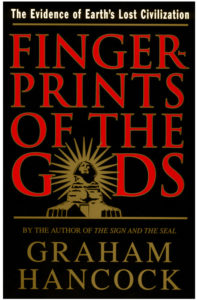 by outside forces because it negated Native genius and assumed that the ancient Americas could not have possibly given rise to complex civilizations independently. It was in the late 1960s and early 1970s when alternative or “fringe” theories began to emerge and the pulp press was full of books on explanations for the ancient civilizations of the Americas as products of Old World contact, the lost continent of Atlantis or even extraterrestrials. The prolific British writer, Graham Hancock, who has written on a variety of topics including the mysteries of the Great Sphinx, the connection of Mars to primitive earth and the lost continent of Atlantis, mentions Votan in his 1995 work The Fingerprints of the Gods. According to Hancock, Votan came to Mexico from the East on a ship with an entourage. Votan is described as a bearded Nordic-looking man dressed in flowing robes, remarkably resembling the Viking god Odin. Many people have discredited this work and the dozen or so other books by Hancock as pseudoarchaeology and severely lacking in any sort of scientific merit even though his books have sold well into the millions.
by outside forces because it negated Native genius and assumed that the ancient Americas could not have possibly given rise to complex civilizations independently. It was in the late 1960s and early 1970s when alternative or “fringe” theories began to emerge and the pulp press was full of books on explanations for the ancient civilizations of the Americas as products of Old World contact, the lost continent of Atlantis or even extraterrestrials. The prolific British writer, Graham Hancock, who has written on a variety of topics including the mysteries of the Great Sphinx, the connection of Mars to primitive earth and the lost continent of Atlantis, mentions Votan in his 1995 work The Fingerprints of the Gods. According to Hancock, Votan came to Mexico from the East on a ship with an entourage. Votan is described as a bearded Nordic-looking man dressed in flowing robes, remarkably resembling the Viking god Odin. Many people have discredited this work and the dozen or so other books by Hancock as pseudoarchaeology and severely lacking in any sort of scientific merit even though his books have sold well into the millions.
As the pendulum swings, more academic publications are opening up to more scholarly research about Old World and New World contact. Where this topic was completely off limits a mere 20 years ago, investigators are making some headway in the major journals and other “publications of merit.” Perhaps one day we will be able to come to conclusions about whether Votan was a real Viking who made his way to ancient Mexico or if this story will be relegated to the heap of pulp paperbacks touting pseudoscience and wishful thinking.
REFERENCES (Not a formal bibliography
Fair Gods and Stone Faces: Ancient Seafarers and the New World’s Most Intriguing Riddle by Constance Irwin We are Amazon affiliates. Buy the book here: https://amzn.to/3bp6gtU
“The Marvelous Odyssey of Votan, a Bronze Age Seafarer” as found on the website Cogniarchae
Description of the Ruins of an Ancient City Discovered Near Palenque in the Kingdom of Guatemala by Antonio del Rio
Fingerprints of the Gods by Graham Hancock. We are Amazon affiliates. Buy the book here: https://amzn.to/2zr6TGb

32 thoughts on “Vikings in Ancient Mexico? The Story of Votan”
Is there a spanish version of this blogpost or blog? Really cool stuff
Sorry, Leandro, everything is in English only. I’m sure if you cut and paste into Google Translate, most of it will translate well. Thanks for your interest in my podcast. —Robert
Well if the Vikings made it to modern day Canada then there’s not a reason in the world why they couldn’t or wouldn’t continue to explore all the way down the coast to south America.
I agree. The post offers a theory. For some reason I have gotten more flak about this show than any others, especially from people have a problem with any “white” influence in Mexico during an often romantically viewed pre-Conquest time. As the creator of this show, I am open to all possibilities.
Keith…google Vikings in the California desert. There are photos of Native Rock Art that depicts classic Viking Long Boats. The message is loud & clear…there were Native Indians that observed these Long Boats & the people on them & then chipped the images onto the rocks.
If Vikings arrived to Mexico; they did too late. Spanish arrived first and conquer the land. Then later a revolution came and the mix between Spanish people and Mexicans Indians kick all Spanish back to Spain. That is how Mexico got its independence and that is why we all talk Spanish here with very bad traditions as the Bull fight. What is this shit?. . . anyway always the bigger and stronger wins. If Vikings would arrived first; I would have blue eyes and blond hair and be taller than what standard Spanish people is; which is 1.7o meters tall.
Hi Juan. I suggest you take a listen one more time.
If we discount the possibility that the Vikings brought the belief of Wodin to Mexico and he became Votan, then must we consider that he came on his own or as a powerful deity co- existed across the globe simultaneously?
Good point!
Very interesting, never heard of the connection but I was just in Iceland and one of my favorite things I saw there was of some graffiti that said Leifur Heppni, Leifur the lucky who wasn’t so lucky because he discovered America 500 years before Columbus but never gets any credit. I’ve spent a lot of time in Chiapas and always found it curios that there are a large number of Mayan that inhabit the villages around San Cristobol de las Casas were very fair skinned with brilliant green eyes. It would be fascinating to do dna testing. Please disregard the comments of the doubters, they might be very upset when they find out they have more asian dna than spanish!!
Thanks for the comments Kevin. DNA testing would be quite interesting, I agree. I wish I could get up to Iceland some day. Sound fascinating.
Yup. My moms DNA Is almost mtna is 100% Native American, halotype b, but her overall DNA contains old south American native blood from chile, Peru, Columbia, along with some Viking blood. So I did some research and found some old tribes in Peru have Viking blood. My mom mentioned too she had cousins relatives with colored eyes, whereas our eyes are so dark brown they are black. Looking more, some Peruvian peoples are thought to have sailed down into Mexico. So no doubt I bet the Vikings sailed all the way into South America.
Very interesting. Thanks for sharing Sylvia.
If you look at the Brazilian peoples they have an array of different peoples some even have blue eyes some are black some are pale you never know
I am of Norwegian descent and have tested with FTDNA and have matches outside of Norway which correspond pretty conspicuously with where the Vikings traveled and settled. I also have several matches in Mexico Guatemala and Cuba, which I thought was very odd because the men I match have Spanish names they are not Norwegians who moved there. The surnames are Tejeda, Solis and Mortera.
That is very interesting. People did get around many centuries ago. I wonder if it would be possible to tell if those people in Mexico, Cuba and Guatemala have DNA corresponding to the Iberian Peninsula and you are related to Europeans instead of Americans. Then again, the Vikings did roam far and could have made it to the Maya areas. This Votan show has generated a lot of controversy for me. People have accused me of racism for just putting forth the idea that MAYBE there was outside contact with northern Europe (the argument is that the indigenous civilizations didn’t need any “outside help” to develop complex societies). I am just a presenter and do not have an agenda here. Sorry for the aside, and thank you for commenting.
There is a “rune stone” in eastern Oklahoma – I used quotes because I’ve seen signs for it, but never been there myself. The Norse, “Vikings”, traveled a very long way during their time, we still don’t know how far. I find it plausible that a Norse expedition made their way that far south, and maybe left some influence on the natives – and that’s not taking anything away from the culture that developed independently in Central and South America. On a related note, didn’t some groups in the Americas have tales of “Gods” coming from the sea? Bearded white men?
Thanks for your comments. I think as a bold, seafaring people, the Vikings could have made it as south as Mexico, sure. For the “bearded white gods” reference, you should check out my show from last week – episode #100 – about Quetzalcoatl.
I have Norwegian DNA mixed with Mayan through my mother, but it is AFTER the Spanish arrived along with the Dutch (Spain ruled Netherlands at one point, but were also making colonies in the so-called “New World”). I am Puerto Rican and that Nordic came via the Virgin Islands.
Is a very interesting article. One of my brothers did a research and discovered that my grandfather has Scandinavian heritage, he said jokingly that he resembles a Viking, he was very tall, green eyes, light skin, very brave and very tough! Also my father was very tall, light skin, he didn’t look Mexican at all.
votan is the twin brother of wotan
in mexico;
votan = pakal =quetzalcoatl
wotan = zamna
Very interesting. Thanks for posting!
In the 1500’s De Soto wrote of his utter dismay at finding tall redheaded Indians in what is present day Mississippi. In the 900’s Eric the Red lost a fleet of Viking ships in the North Atlantic to a storm presumed lost at sea. Could those Viking ships have been blown off course to eastern Mexico?
Yes, it could be. There are stories of “red headed giants” throughout the Americas. The stories could just be real histories of 6’2″ Norsemen.
I was in Mexico City some years ago. There is a big square before the City Hall. A Catholic Church on left hand side built on the ruins of an indian temple. Inside the City Hall was a balcony from side to side of the hall and on the wall above the balcony there is a painting describing Mexico history – Indian history, Europa arrives, Modern History… The guide told the whole story. Except for one thing. The painting started with a face of a blond guy with blue eyes. There was no comments about that.
I asked the guide. All he said was “next question”.
That’s extremely interesting. I have to follow up on that for sure.
Everything is going to Mexico
Hi
Was good
What is the significance of the walrus on Votan’s helm in the above artistic representation of him?
I arrived at this article via Google search for Votan, because I’m reading Neil Gaiman’s novel American Gods and needed background info for context.
I hope the “racism” nonsense has quieted down for you, Robert. Folks can be downright uppity. The article was very fascinating (despite the Wikipedia as a reference source.😉 ) I’ve bookmarked this site for further reading. Thanks, sir!
Hi Paula, Thanks for your comments. The racism nonsense hasn’t calmed down, but I have a thick skin at this point. I was thinking just this morning how many times in the past few weeks I have been called “racist” or “Nazi.” I think it might make the people calling me that feel all warm and fuzzy inside but the words are so overused that they are meaningless. Wikipedia was used as a reference for the term “confirmation bias” only. Somehow a reference to my book made it to the Wikipedia page on the Toltec statues of Tula but I had nothing to do with that (have I “arrived”? haha). Thanks again for stopping by and taking the time to comment.
Do remember that Odin and his people originally came to Scandinavia from the south-east, possibly the Caucasus/Azerbaijan. The original Scandinavian population was subdued. They were known to be much darker (at least dark hair) than the newcomers, who were blonde with blue, green, grey eyes.